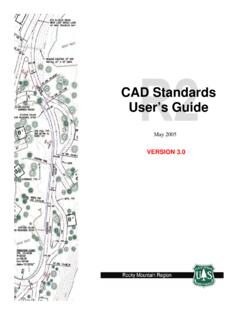Transcription of The FIDIC Suite of Contracts
1 The FIDIC Suite of Contracts m a k i n g t h e difference Introduction The FIDIC Suite of Contracts The FIDIC Suite of construction Contracts is written and published by the International Federation of Consulting Engineers. The FIDIC acronym stands for the French version of the Federation s name (Federation Internationale des Ingenieurs-Conseil). The best known of the FIDIC Contracts are the Red Book (building and engineering works designed by the Employer) and the Yellow Book (M&E, building and engineering works designed by the Contractor).
2 The original edition of the Red Book dates back to 1957. In recent years FIDIC has published many new Contracts to complement the Suite . The first of the new Contracts was the Orange Book for design, build and turnkey works published in 1995. In 1999 FIDIC published a revised Suite of Contracts with updated versions of the Red and Yellow books together with a Green Book as the short form of contract and a Silver Book for turnkey Contracts . More recently in 2005 FIDIC published an amended version of the Red Book for use by Multilateral Development Banks and in 2007 published a seminar edition of the Gold Book for Design, Build and Operate Contracts .
3 Less well know FIDIC Contracts are also available such as the Turquoise Book for Dredging and Reclamation Works published in January 2006 and the White Book model services agreement published in October 2006 The FIDIC Suite of Contracts now covers a wide range of projects and methods of procurement. It is therefore likely that any international contractor or consultant working outside of the UK will frequently encounter FIDIC conditions of contract . Sub-contractors will similarly encounter FIDIC derived conditions of contract where they are operating internationally.
4 Even subcontractors that only operate within a particular country will from time to time encounter FIDIC derived conditions where they are operating within a supply chain governed by a FIDIC main contract . Employers may also use FIDIC conditions where the local standard conditions of contract are not suited to the procurement route and there is a need to avoid the risks and expense of preparing a bespoke contract . The different forms of contract within the FIDIC Suite are organised around the extent of design and other responsibilities assumed by the Employer and the Contractor.
5 The Suite is therefore now aligned with common procurement strategies rather than the nature of the construction works. Where works are predominantly designed by the Employer, then the Red Book is the appropriate form of contract . Where works are predominantly designed by the Contractor the Yellow Book is appropriate regardless of whether the works were heavy civils or M&E. The Silver Book is clearly intended for use on Turnkey projects and the Gold Book where The FIDIC Suite of Contracts m a k i n g t h e difference the contractor operates the asset in addition to designing and building.
6 Employers may benefit from utilising FIDIC conditions where potential bidders are from different countries. In such cases the bidders may perceive the use of the familiar FIDIC conditions as increasing the attractiveness of enquiry. This could translate into lower tenders as the contract risks should be better understood by the bidders. The FIDIC forms can therefore be applied to a wide range of differing engineering and construction projects; from traditional civil engineering to hi-tech windmills and heavy duty oil and gas process plants.
7 FIDIC has reduced the number of clauses in all of the recent Contracts . The Orange Book contained 20 clauses, as now do the Red, Yellow and Silver Books. Previously, the Red Book had 72 clauses. FIDIC has also standardised the terms across the full Suite so that wherever possible the same words and definitions have the same meanings and the clauses are now grouped in a logical manner across all the Contracts . Knowledge of one form of FIDIC conditions is therefore of immediate benefit in respect of other forms. Each of the main conditions of contract in the Suite now contains a core of common conditions with little significant difference between them.
8 Amendments to the standard published FIDIC Contracts are incorporated by the inclusion of Particular conditions and guidance on how to prepare the Particular conditions is published by FIDIC . Where Particular conditions are incorporated into the contract care must be taken to ensure that no ambiguity is created, either with the general conditions or between the clauses in the Particular conditions . It is essential that all these drafting tasks, and the entire preparation of the contract documents, are entrusted to personnel with the relevant experience of the contractual, technical and procurement aspects of the project.
9 The Suite does not currently include a standard form of subcontract although in 2004 FIDIC stated that a Subcontract form would be a desirable addition to Suite . It is expected that if a subcontract form is published that a version for use with the Red Book main contract will be first. The main forms of contract are described further in some detail below The FIDIC Suite of Contracts m a k i n g t h e difference Green Book Short Form of contract First Edition 1999 Contents of contract Book Agreement general conditions Rules for Adjudication Notes for Guidance The Short Form of contract is recommended for engineering and building work of relatively small capital value.
10 The Guidance Notes for the Green Book recommended that generally it should not be used on projects with a contact value greater than US$500,000. However, depending on the type of work and the circumstances, the Green Book may be suitable for Contracts of considerably greater value. It is a flexible document containing all the essential administrative and commercial arrangements. It is possible to easily amend and supplement the provisions of the Green Book with differing options incorporated via the Appendix.

